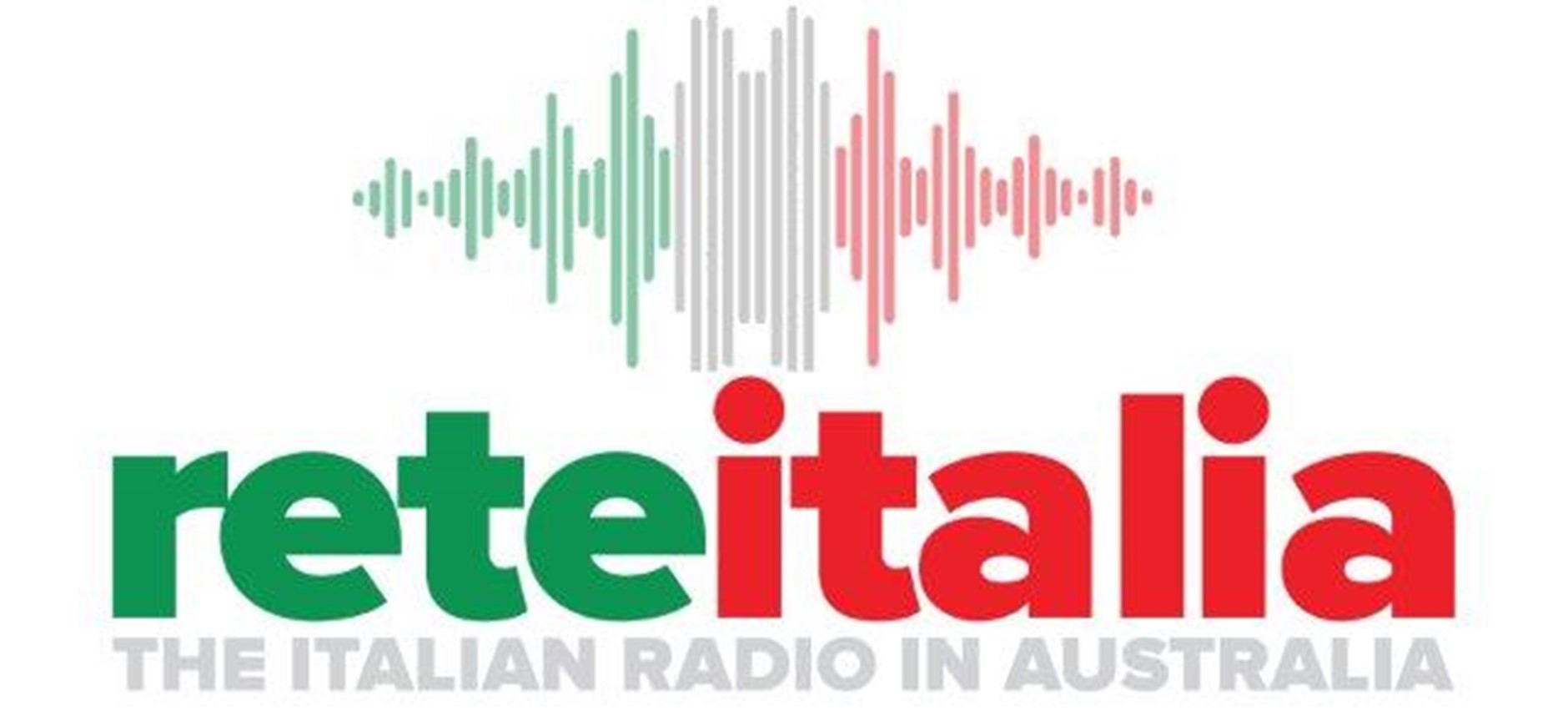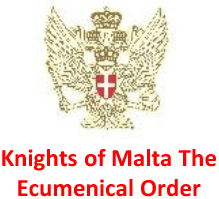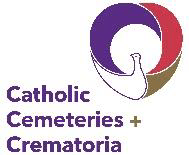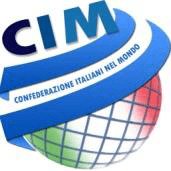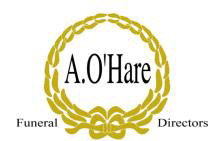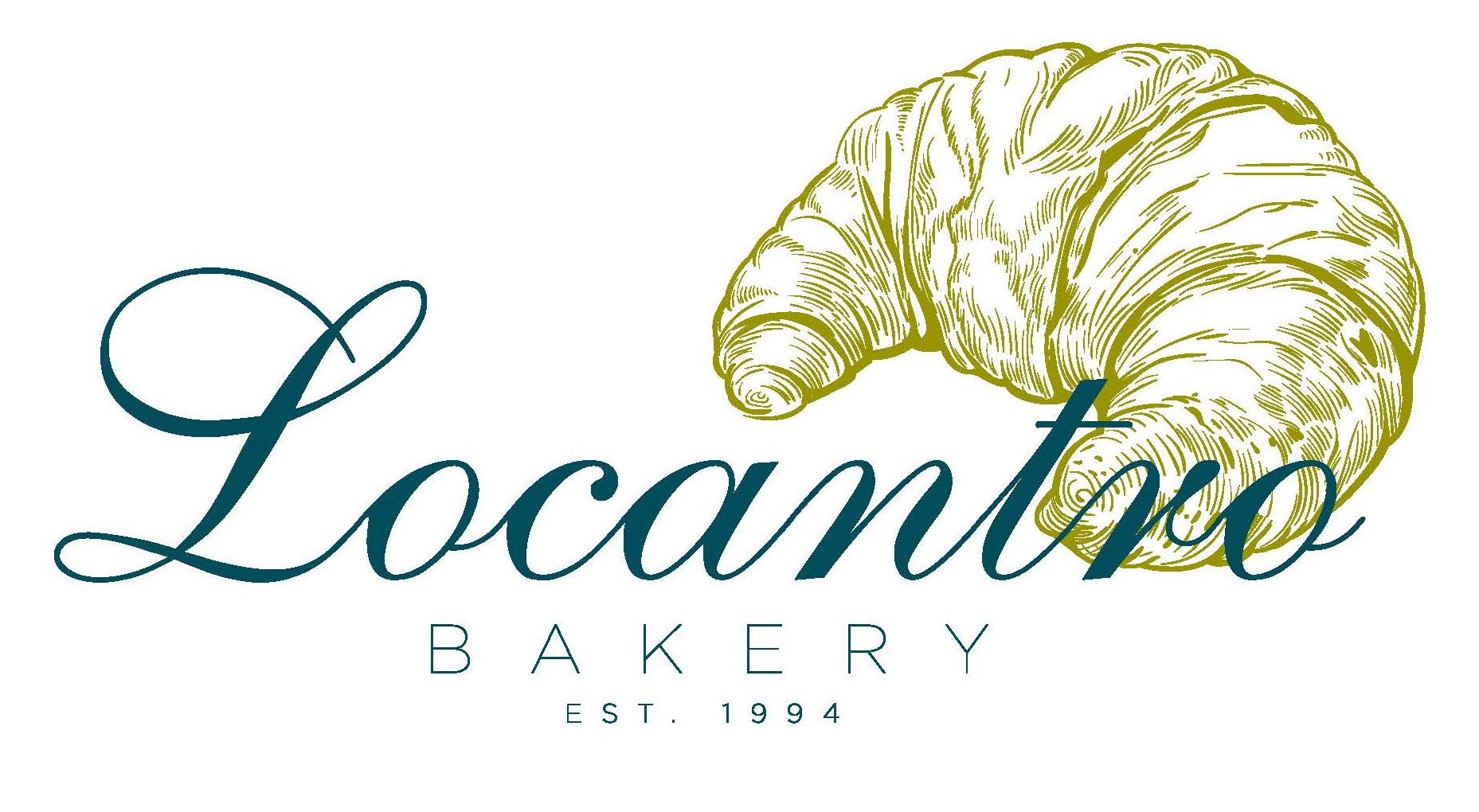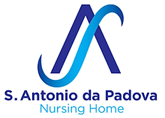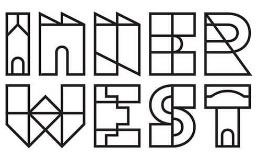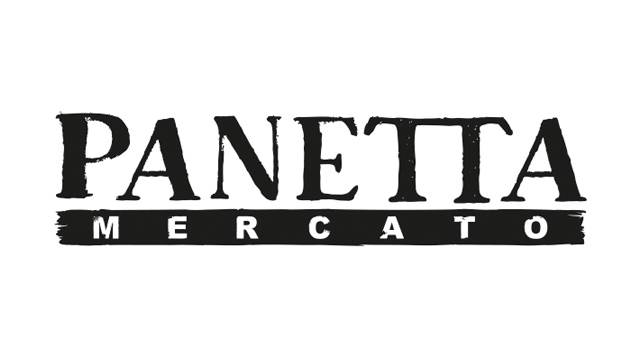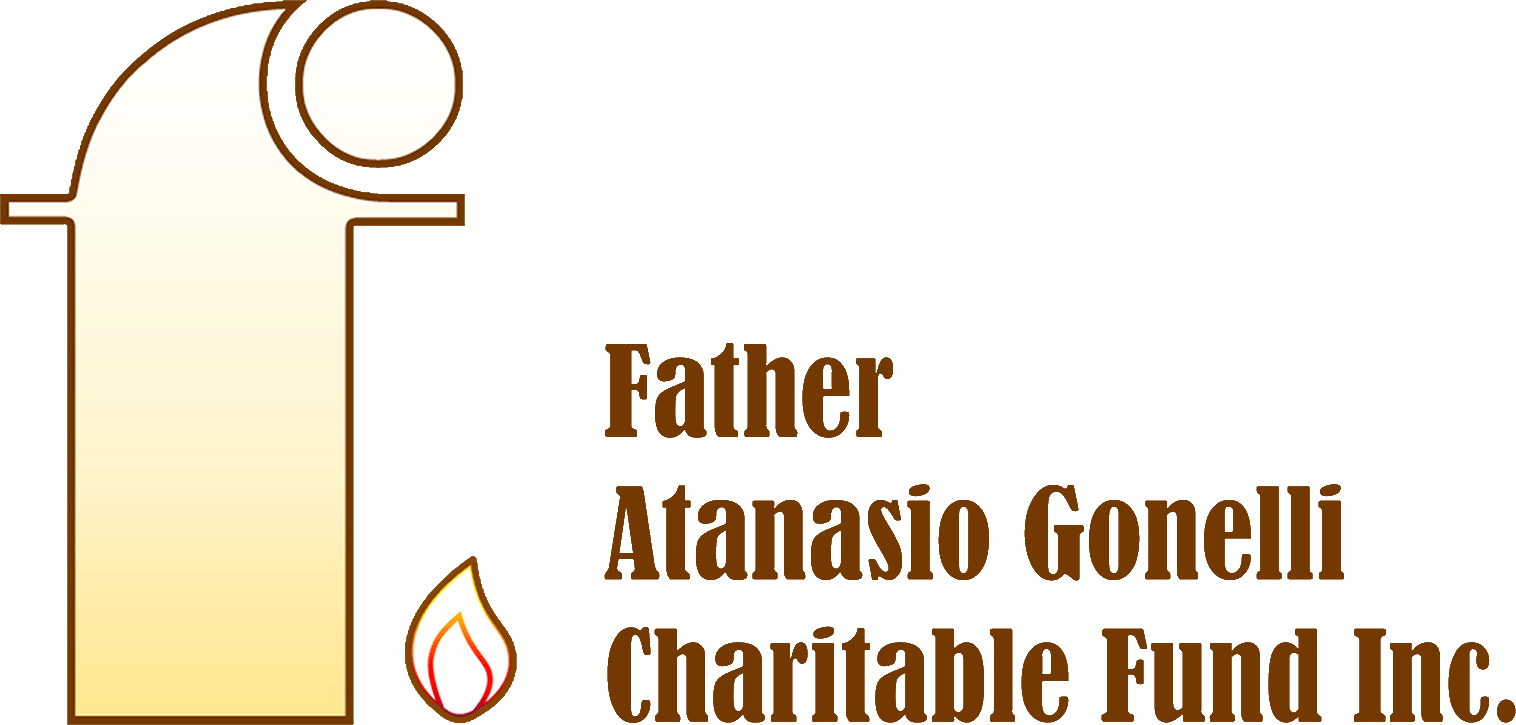About Father Atanasio Gonelli OFM CAP.
Athanase (Bapt. Luigi) Gonelli
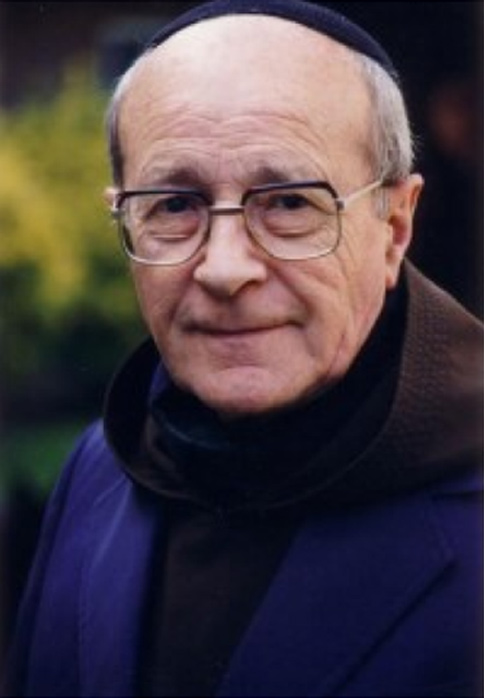
“Padre Atanasio” was born on 11 February 1923, in the tiny hillside village of Cattognano di Comano, Massa Carra, Italy. He was baptised “Luigi” by his parents Prospero Gonelli and Ada Maloni.
At the age of 12 years he entered the diocesan Minor Seminary and then a few years later, he suddenly transferred to the Capuchin Seraphic College at Scandiano. When he was asked about this, he said that it was because “a visiting Capuchin preacher came to our church in my home parish in Italy – and he simply invited me to join the Capuchins”. So he entered the Novitiate of the Capuchins in 1939, was simply professed in 1940 and Solemnly Professed in 1943. He was ordained in 1947 at Reggio Emilia. By then his immediate family had migrated to Australia, so they were not present for his ordination.
All his formation had taken place during the Second World War. It was a very difficult time, food was scarce and towards the end of the war there were bombings and many people were wounded. He ministered as a priest in the Province of Parma from 1947 to the end of 1948. His ministry included being chaplain to the sick in the hospital and welfare work. This ministry gave him an insight into the wider needs of the people. He was asked if he would go to the Capuchin Missions in Africa, but then he was diverted to Australia instead.
He arrived in Sydney on 28 January 1950 at the age of 27. As a young Capuchin friar he began welcoming every group of Italian migrants who came to Sydney by ship. He tried to find housing assistance for newly arrived migrants, and often helped them find work. He visited them in hospital and cared for their spiritual needs. As time went on he became a spiritual father for a community that rapidly expanded because of the postwar mass migration to Australia. It must be understood that from 1945 to 2000 almost 400,000 Italians came to Australia. The immediate needs of the ministry just after the war were impossible.
The Catholic Church of St Fiacre at Leichhardt became the spiritual centre of what was called “little Italy” because the Friars lived and ministered from there. Almost every day long lines of people waited patiently outside the presbytery to see the friars about their many needs. In all this Padre Atanasio worked quietly, steadily and with gentle kindness. Nothing seemed to upset him or if it did, he kept it to himself. After one weekend 36 baptisms were entered into the Register with his name as celebrant. In the friary, despite the pressure of the apostolate that distorted the timetable of regular observance so that Evening Prayer was for many years at 4:00pm, Atanasio was regularly present and he rarely missed the mid-day meal.
Besides his religious life and religious ministry, he was doing so much more socially. Just a few weeks after his arrival, he founded an association which was called Azione Cattolica Italiana San Francesco. Hundreds of young Italians joined its cooking classes and attended its Italian film nights, held at Cusa House, a building at 444 Elizabeth Street, Surry Hills, that was owned by the Catholic Archdiocese of Sydney. It was nicknamed Ristorante al Chianti. The number of young people involved in the various activities of the association ranged between three and four hundred members.
In the early ’60s, he became involved in Sydney’s media scene, starting an Italian radio program on 2SM and working for the Italian community newspaper La Fiamma. He served as its editor-in-chief and photographer for eight years. He was sent at one time to Harvey in Bunbury Diocese Western Australia to supply while other friars went back to Italy for a home visit and instead of complaining, he said he enjoyed himself despite it being 4,000 miles away from Sydney. He also, for a time, left Sydney to serve in Melbourne and then in Adelaide. However, he found time to make brief trips back to oversee his radio show and newspaper.
In 1961, he moved back to Sydney and established a number of Italian language schools for children in Annandale, Brookvale, Liverpool and Blacktown. He also organised sporting and recreational activities for them.
At the age of 12 years he entered the diocesan Minor Seminary and then a few years later, he suddenly transferred to the Capuchin Seraphic College at Scandiano. When he was asked about this, he said that it was because “a visiting Capuchin preacher came to our church in my home parish in Italy – and he simply invited me to join the Capuchins”. So he entered the Novitiate of the Capuchins in 1939, was simply professed in 1940 and Solemnly Professed in 1943. He was ordained in 1947 at Reggio Emilia. By then his immediate family had migrated to Australia, so they were not present for his ordination.
All his formation had taken place during the Second World War. It was a very difficult time, food was scarce and towards the end of the war there were bombings and many people were wounded. He ministered as a priest in the Province of Parma from 1947 to the end of 1948. His ministry included being chaplain to the sick in the hospital and welfare work. This ministry gave him an insight into the wider needs of the people. He was asked if he would go to the Capuchin Missions in Africa, but then he was diverted to Australia instead.
He arrived in Sydney on 28 January 1950 at the age of 27. As a young Capuchin friar he began welcoming every group of Italian migrants who came to Sydney by ship. He tried to find housing assistance for newly arrived migrants, and often helped them find work. He visited them in hospital and cared for their spiritual needs. As time went on he became a spiritual father for a community that rapidly expanded because of the postwar mass migration to Australia. It must be understood that from 1945 to 2000 almost 400,000 Italians came to Australia. The immediate needs of the ministry just after the war were impossible.
The Catholic Church of St Fiacre at Leichhardt became the spiritual centre of what was called “little Italy” because the Friars lived and ministered from there. Almost every day long lines of people waited patiently outside the presbytery to see the friars about their many needs. In all this Padre Atanasio worked quietly, steadily and with gentle kindness. Nothing seemed to upset him or if it did, he kept it to himself. After one weekend 36 baptisms were entered into the Register with his name as celebrant. In the friary, despite the pressure of the apostolate that distorted the timetable of regular observance so that Evening Prayer was for many years at 4:00pm, Atanasio was regularly present and he rarely missed the mid-day meal.
Besides his religious life and religious ministry, he was doing so much more socially. Just a few weeks after his arrival, he founded an association which was called Azione Cattolica Italiana San Francesco. Hundreds of young Italians joined its cooking classes and attended its Italian film nights, held at Cusa House, a building at 444 Elizabeth Street, Surry Hills, that was owned by the Catholic Archdiocese of Sydney. It was nicknamed Ristorante al Chianti. The number of young people involved in the various activities of the association ranged between three and four hundred members.
In the early ’60s, he became involved in Sydney’s media scene, starting an Italian radio program on 2SM and working for the Italian community newspaper La Fiamma. He served as its editor-in-chief and photographer for eight years. He was sent at one time to Harvey in Bunbury Diocese Western Australia to supply while other friars went back to Italy for a home visit and instead of complaining, he said he enjoyed himself despite it being 4,000 miles away from Sydney. He also, for a time, left Sydney to serve in Melbourne and then in Adelaide. However, he found time to make brief trips back to oversee his radio show and newspaper.
In 1961, he moved back to Sydney and established a number of Italian language schools for children in Annandale, Brookvale, Liverpool and Blacktown. He also organised sporting and recreational activities for them.
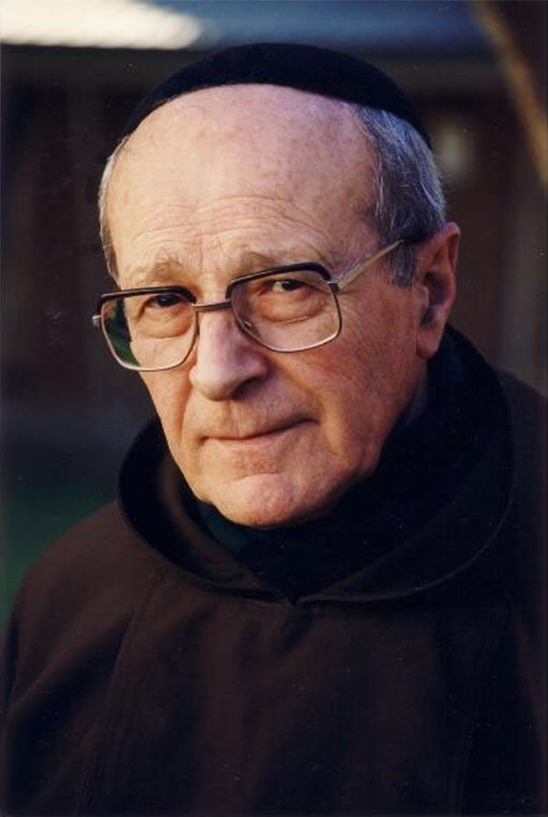
He became the official chaplain for the Italian returned servicemen’s associations. He founded the Associazione Cattolica Italiana San Francesco, which took over from his previous group. The program of this organisation had three phases. The first was to build a hall for the young people. The second was to build a kindergarten for the children of Italian immigrants. The third was to provide a place where the elderly Italians could enjoy themselves together. The Saint Frances hall was built in 1968 for the young people next to St Fiacre’s Church. In 1973 began the San Franscesco kindergarten.
In 1998 with the collaboration of Co.As.It., the President of the Republic of Italy, Oscar Luigi Scarfano, inaugurated “La Casa d’Italia Co.As.It. San Francesco”. The Associazione San Francesco, as it was then called, contributed one million dollars Australian towards this venture. If there was something going on in the Italian community Padre Atanasio knew about it or was involved in it. He co-founded the Italian Association of Assistance, now known as Co.As.It., which not only still fulfills its original objectives of promoting the Italian language and culture in NSW and helping the growing number of migrants arriving from Italy again, but has since diversified its services for the marginalised and the elderly. In 1968, the Italian president Giuseppe Saragat visited Australia and announced that his government had approved a law to allow Co.As.It. to expand its services around the world.
Towards the end of the decade, Padre Atanasio was the spiritual director for a wide spectrum of Italian associations in New South Wales, including the festa groups of the saints, military organisations, regional and cultural art groups. He was also Spiritual Assistant to the Italian Secular Franciscans at Leichhardt and to Our Lady of Grace Aged Care Facility at Dural.
The Italian government recognised his consistent work in 1996 by conferring on him the title of Knight of the Order of Merit of the Republic of Italy.
When asked by his friends how he managed to please everyone, he responded by saying: “I don’t know. I am just a poor friar. Perhaps it is the Lord working through me”. He was known to always say “yes” and to never refuse a plea for help at least with a kind word and a prayer.
He recovered from throat cancer a decade ago, but then he was struck with lung cancer a couple of years later. Padre Atanasio celebrated three Masses each Sunday: one at St Fiacre’s in Leichhardt, one at Croydon and one at Concord West, even when his health began to deteriorate. He died at the Scalabrini Village Drummoyne Sydney on Sunday, 26 February 2012 at the age of 89. His funeral, conducted by Most Rev Bishop Joseph Oudeman OFM Cap, Auxiliary Brisbane, was at St Fiacre Catholic Church, Leichhardt, in Sydney. It was on the 1st of March, the anniversary of his Ordination to priesthood and it marked the 65th anniversary of his priesthood.
Although he assisted in different places during his life in Australia his greatest ministry was to the Italian Community in Sydney continually from 1964. Each morning, his later somewhat hoarse sounding voice would come on Italian Radio for a few minutes with a thought for the day, “Buon giorno, qui è Padre Atanasio, oggi è la festa di…”.
In the early days he served on the Capuchin Council of the Vice Province and he was for many years Guardian of the Friary at Leichhardt. He was the one who fixed up the Christmas Crib at Leichhardt each Advent and he often changed locks and hinges and did maintenance in the friary and Church. As usual he made all this look easy, as if it was no trouble at all. His good works were many and in all things he was a gentle and grace filled man whom many people revere as a saint.
His charity, the Father Atanasio Gonelli Charitable Fund Inc. is carrying on his work of caring for those in need.
Written by Father John Cooper OFM Cap
2013
In 1998 with the collaboration of Co.As.It., the President of the Republic of Italy, Oscar Luigi Scarfano, inaugurated “La Casa d’Italia Co.As.It. San Francesco”. The Associazione San Francesco, as it was then called, contributed one million dollars Australian towards this venture. If there was something going on in the Italian community Padre Atanasio knew about it or was involved in it. He co-founded the Italian Association of Assistance, now known as Co.As.It., which not only still fulfills its original objectives of promoting the Italian language and culture in NSW and helping the growing number of migrants arriving from Italy again, but has since diversified its services for the marginalised and the elderly. In 1968, the Italian president Giuseppe Saragat visited Australia and announced that his government had approved a law to allow Co.As.It. to expand its services around the world.
Towards the end of the decade, Padre Atanasio was the spiritual director for a wide spectrum of Italian associations in New South Wales, including the festa groups of the saints, military organisations, regional and cultural art groups. He was also Spiritual Assistant to the Italian Secular Franciscans at Leichhardt and to Our Lady of Grace Aged Care Facility at Dural.
The Italian government recognised his consistent work in 1996 by conferring on him the title of Knight of the Order of Merit of the Republic of Italy.
When asked by his friends how he managed to please everyone, he responded by saying: “I don’t know. I am just a poor friar. Perhaps it is the Lord working through me”. He was known to always say “yes” and to never refuse a plea for help at least with a kind word and a prayer.
He recovered from throat cancer a decade ago, but then he was struck with lung cancer a couple of years later. Padre Atanasio celebrated three Masses each Sunday: one at St Fiacre’s in Leichhardt, one at Croydon and one at Concord West, even when his health began to deteriorate. He died at the Scalabrini Village Drummoyne Sydney on Sunday, 26 February 2012 at the age of 89. His funeral, conducted by Most Rev Bishop Joseph Oudeman OFM Cap, Auxiliary Brisbane, was at St Fiacre Catholic Church, Leichhardt, in Sydney. It was on the 1st of March, the anniversary of his Ordination to priesthood and it marked the 65th anniversary of his priesthood.
Although he assisted in different places during his life in Australia his greatest ministry was to the Italian Community in Sydney continually from 1964. Each morning, his later somewhat hoarse sounding voice would come on Italian Radio for a few minutes with a thought for the day, “Buon giorno, qui è Padre Atanasio, oggi è la festa di…”.
In the early days he served on the Capuchin Council of the Vice Province and he was for many years Guardian of the Friary at Leichhardt. He was the one who fixed up the Christmas Crib at Leichhardt each Advent and he often changed locks and hinges and did maintenance in the friary and Church. As usual he made all this look easy, as if it was no trouble at all. His good works were many and in all things he was a gentle and grace filled man whom many people revere as a saint.
His charity, the Father Atanasio Gonelli Charitable Fund Inc. is carrying on his work of caring for those in need.
Written by Father John Cooper OFM Cap
2013
Obituary
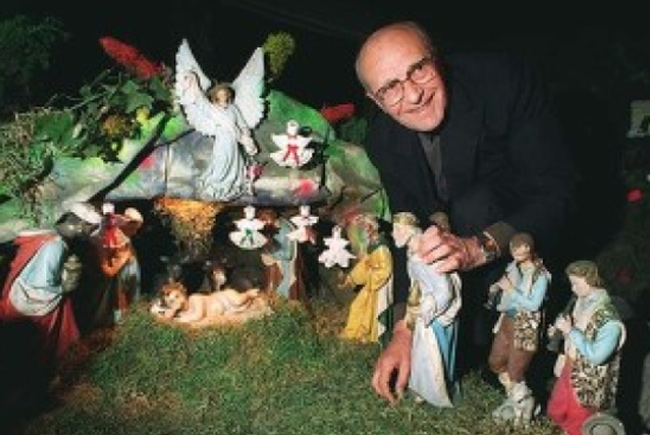
The Sydney Morning Herald, 10 May 2012:
Father Atanasio was a Spiritual Pillar for the Italian Community
Several years ago, when Father Atanasio Gonelli was travelling with the Italian Consul to a function in Canberra, he saw a car accident and insisted they pull over. Just like the good samaritan, he comforted the crash victims and accompanied them as an ambulance took them to a hospital in Goulburn. No one at the function was surprised to hear that he wouldn’t be attending, knowing he was a man who practised what he preached.
Luigi Gonelli was born on February 11, 1923, in a small village called Cattognano di Comano, in the province of Massa Carrara, Italy. He was baptised with the name Luigi. When he turned 12, Luigi entered the diocesan seminary and about five years later joined an order of Capuchin Fathers. In 1947 he was ordained a priest, with the name Atanasio, in the affluent Italian city of Reggio Emilia. He conducted welfare activities to help the sick in hospitals before volunteering to immigrate to Australia at the end of 1949 to begin his apostolate work among Sydney’s flourishing Italian migrant community.
Weeks after arriving in Sydney, Gonelli founded an association called the Azione Cattolica Italiana San Francesco. He became a spiritual pillar for a community that was rapidly expanding because of the postwar mass migration. Hundreds of young Italians joined its cooking classes and attended its Italian film nights, held at Cusa House, a building in Elizabeth Street that was owned by the Catholic Archdiocese of Sydney.
Housing and employment assistance programs were established under his guidance. Sometimes he would visit the homes of those who were sick, providing them with aid and comfort.
In the early ’60s, Gonelli dipped into Sydney’s media scene, starting an Italian radio program on 2SM and founding the Italian community newspaper La Fiamma. He served as its editor-in-chief for eight years. He left Sydney to serve in Adelaide and Melbourne but found time to make brief trips back to oversee his radio show and newspaper.
In 1961, Gonelli moved back to Sydney and established a string of Italian language schools for children in Annandale, Brookvale, Liverpool and Blacktown. He also organised sporting and recreational activities for them.
He co-founded the Italian Association of Assistance, now known as Co.As.It, which not only still fulfils its original objectives of promoting the Italian language and culture in NSW and helping the growing number of migrants arriving from Italy, but has since diversified its services for the marginalised and the elderly. In 1968, the Italian prime minister Giuseppe Saragat visited Australia and announced that his government had approved a law to allow Co.As.It to expand its services around the world. Towards the end of the decade, Gonelli was the spiritual director for a wide spectrum of Italian associations in NSW, including saints, military, regional and cultural arts groups.
The Italian government recognised Gonelli’s work in 1996 by conferring on him the title of Knight of the Order of Merit of the Republic of Italy.
When asked by friends how he managed to please everyone, he responded by saying: ”I don’t know. I am just a poor friar. Perhaps it is the Lord working through me.” He was known to always say ”yes” and to never refuse a plea for help. Last year, Gonelli celebrated more than 60 years of service and was presented with a papal certificate of commendation through the Apostolic Nuncio in Australia and a congratulatory letter from the Catholic Archbishop of Sydney, Cardinal George Pell. In September, a charity fund bearing his name was created to continue his work as the chaplain of St Fiacre’s Church at Leichhardt, a ministry given to him by Pell.
He recovered from throat cancer a decade ago but then he was struck with lung cancer a couple of years ago. Gonelli celebrated three Masses each Sunday: one at St Fiacre’s in Leichhardt, one at Croydon and one at Concord West, even when his health began to deteriorate. He died in a retirement village in Drummoyne at the age of 89. The date of his funeral marked Father Gonelli’s 65th anniversary of his priesthood.
Father Atanasio was a Spiritual Pillar for the Italian Community
Several years ago, when Father Atanasio Gonelli was travelling with the Italian Consul to a function in Canberra, he saw a car accident and insisted they pull over. Just like the good samaritan, he comforted the crash victims and accompanied them as an ambulance took them to a hospital in Goulburn. No one at the function was surprised to hear that he wouldn’t be attending, knowing he was a man who practised what he preached.
Luigi Gonelli was born on February 11, 1923, in a small village called Cattognano di Comano, in the province of Massa Carrara, Italy. He was baptised with the name Luigi. When he turned 12, Luigi entered the diocesan seminary and about five years later joined an order of Capuchin Fathers. In 1947 he was ordained a priest, with the name Atanasio, in the affluent Italian city of Reggio Emilia. He conducted welfare activities to help the sick in hospitals before volunteering to immigrate to Australia at the end of 1949 to begin his apostolate work among Sydney’s flourishing Italian migrant community.
Weeks after arriving in Sydney, Gonelli founded an association called the Azione Cattolica Italiana San Francesco. He became a spiritual pillar for a community that was rapidly expanding because of the postwar mass migration. Hundreds of young Italians joined its cooking classes and attended its Italian film nights, held at Cusa House, a building in Elizabeth Street that was owned by the Catholic Archdiocese of Sydney.
Housing and employment assistance programs were established under his guidance. Sometimes he would visit the homes of those who were sick, providing them with aid and comfort.
In the early ’60s, Gonelli dipped into Sydney’s media scene, starting an Italian radio program on 2SM and founding the Italian community newspaper La Fiamma. He served as its editor-in-chief for eight years. He left Sydney to serve in Adelaide and Melbourne but found time to make brief trips back to oversee his radio show and newspaper.
In 1961, Gonelli moved back to Sydney and established a string of Italian language schools for children in Annandale, Brookvale, Liverpool and Blacktown. He also organised sporting and recreational activities for them.
He co-founded the Italian Association of Assistance, now known as Co.As.It, which not only still fulfils its original objectives of promoting the Italian language and culture in NSW and helping the growing number of migrants arriving from Italy, but has since diversified its services for the marginalised and the elderly. In 1968, the Italian prime minister Giuseppe Saragat visited Australia and announced that his government had approved a law to allow Co.As.It to expand its services around the world. Towards the end of the decade, Gonelli was the spiritual director for a wide spectrum of Italian associations in NSW, including saints, military, regional and cultural arts groups.
The Italian government recognised Gonelli’s work in 1996 by conferring on him the title of Knight of the Order of Merit of the Republic of Italy.
When asked by friends how he managed to please everyone, he responded by saying: ”I don’t know. I am just a poor friar. Perhaps it is the Lord working through me.” He was known to always say ”yes” and to never refuse a plea for help. Last year, Gonelli celebrated more than 60 years of service and was presented with a papal certificate of commendation through the Apostolic Nuncio in Australia and a congratulatory letter from the Catholic Archbishop of Sydney, Cardinal George Pell. In September, a charity fund bearing his name was created to continue his work as the chaplain of St Fiacre’s Church at Leichhardt, a ministry given to him by Pell.
He recovered from throat cancer a decade ago but then he was struck with lung cancer a couple of years ago. Gonelli celebrated three Masses each Sunday: one at St Fiacre’s in Leichhardt, one at Croydon and one at Concord West, even when his health began to deteriorate. He died in a retirement village in Drummoyne at the age of 89. The date of his funeral marked Father Gonelli’s 65th anniversary of his priesthood.
Want to get involved?
Whether you are able to donate money or your time, help us raise funds, partner with us or let us know about somewhere that we might be able to provide assistance, your help and support will make a difference and help make sure that no one is left behind.
Ways to donate
Make a donation or find out how you can leave a gift in your will. Donations $2 and over are tax deductible.
Partner with us
If you’re a business or charity that has some ideas of how we can help our community by working together, then we would love to hear from you.
Get involved
Maybe you have skills, experience or spare time that can make a difference to your community. Volunteering can be just as rewarding for you as it is for those you’re helping.
Sponsors, Major Donors & Media partners






